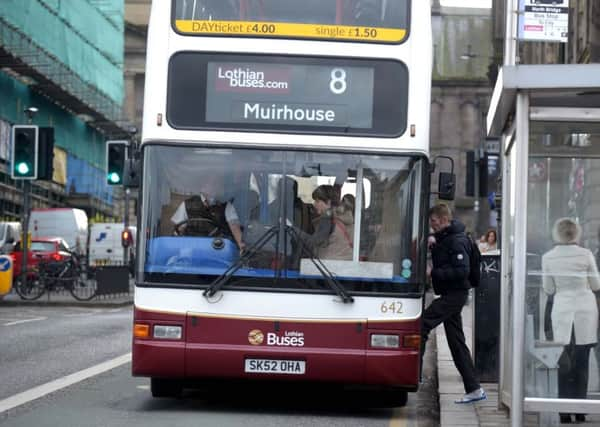Old stigmas about bus users are fast becoming obsolete


The only caveat, however, is that you need a car. In April, Stagecoach withdrew its service after losing out in a Highland Council re-tendering exercise. Now, residents in the rural nook who wish to travel to Inverness by public transport are forced to traipse nearly two miles to flag down a passing service, and even then, their window of opportunity is limited.
According to Norlil Charlton, a member of a local action group battling to get a direct service reinstated, it is impossible to get to Inverness before 10am, or return to Culbokie after 2:30pm. The only alternative is to hitch a lift, or pay around £50 for a round trip in a taxi. At least one family has moved to Cromarty as a result.
Advertisement
Hide AdAdvertisement
Hide AdGiven the village boasts a healthy population, nearly 1,200 souls strong, it is a farcical situation, and one which is indicative of the problems facing those who rely on Scotland’s bus network to go about their daily lives.
According to Sustrans Scotland, the sustainable transport charity, poor public transport provision means more than one million people across Scotland are unable to make the kind of everyday trips most of us take for granted. Research by the charity, released this week, shows that up to a fifth of communities are at risk of “transport poverty”, with the majority of those areas affected being either rural villages or small towns.
Andy Milne, chief executive of Scotland’s Regeneration Forum, said there was a consensus among its members that an “accessible, efficient and affordable” transport infrastructure is imperative to improving the nation’s most economically challenged places.
Mr Milne’s point is an important one, yet it is self-evident: public bus services are a lifeline. What is discussed less often is how the network is also vital to the Scottish economy as a whole.
Whenever the issue is discussed, talk invariably turns to rail links, which are perceived as the arteries which help keep the money flowing. That may be true, but it is not at the expense of other forms of transport – too often the focus on rail obscures the importance of buses in allowing economically active Scots to travel to and from their place of work.
There are probably two reasons for that. The first is that buses and coaches are still perceived as a mode of transport used by the elderly and the retired. Having spent a few hours wading through spreadsheets compiled by Transport Scotland, I am happy to bust that particularly myth.
Over the past decade, the proportion of passengers aged between their twenties and their fifties has increased, while the number of pensioners using the network has dropped. Even more importantly, the old socio-economic assumptions about bus passengers are shown to be bunkum.
In 2005, those with an annual net household income of £10,000 or less accounted for more than a quarter (27 per cent) of journeys. Over the following decade, that demographic’s share whittled down year on year, and stood at just 13 per cent by 2015.
Advertisement
Hide AdAdvertisement
Hide AdBy contrast, while a mere 4 per cent of passengers had a household income exceeding £40,000 in 2005, the figure has jumped all the way up to, yes, 13 per cent, ten years later. In short, there has been a considerable spike in the number of relatively well-off Scots of working age using buses, a development which has elicited next to no comment or analysis. Which brings us to the second reason bus travel is ignored: it is not considered politically sexy enough.
Earlier this month, Ralph Roberts, the managing director of McGill’s Buses, which operates across Inverclyde, Glasgow, Lanarkshire, North Ayrshire, and Renfrewshire, called on the Scottish Government and all politicians to “get over their fascination with the train,” a form of transport which he said took up “all the headlines, political attention, and public purse investment”.
There are a few folk in the west coast who would think twice about extending their sympathies to McGill’s, Scotland largest independent bus company, but the point made by Mr Roberts is a fair one reflected in Transport Scotland’s figures.
The Bus Service Operators’ Grant (BSOG) scheme, which is intended to benefit passengers by helping operators keep their fares low and enabling them to run services which are not commercially viable, distributed £57m in 2005-6, rising to £64m by 2009-10. Yet as of last year, the figure stood at £53m. Similarly, the total amount of local and central government support stood at £301m in 2015-16. It is a considerable sum, but it also the lowest total for ten years.
With the push towards electric vehicles and the roll out of low emission zones around the country, buses could play a key role in a modern, environmentally friendly transport network, but that will require greater investment and commitment. The alternative is higher fares and, worst still, reduced services. The humble bus may never capture the imagination of politicians obsessed with big ticket infrastructure projects, but it is time its importance was fully acknowledged.